Bazaltbor - Laposa Winery - Processing Building
The wines of the Laposa-Cellar following the millennium became well known amongst Hungarian wine drinkers under the brand name Bazaltbor or Basalt wine. Their growing regions are only on the basalt hills. The wine making activity moved down to the foot of the hill, to Badacsonytomaj, from the previous family cellar. An important question then is with what formal method can the building which is of a relatively large-scale compared with its environment be managed. The single reference point can only be the earthbound architecture of the vine as well as nature itself. Being bound to the earth as a result of the programme should be taken literally: building shall take place downwards along the gravitational principle, so that the grapes are exposed only to the most necessary procedures. This way only a quarter of the total area of the vinery is above ground, the rest is contained in the belly of the hill.
On this basis we cannot work with architectural tools, forms, structures and clear archi(tectonic) matches in a traditional sense, but at the same time we cannot reject them entirely either. The viticultural building has to be like a model, but the hierarchic organisational structure is not an exclusive factor for this.
In the geometric model two basic elements the symmetric gable, closed roof abstraction of the press house and the hexagonal shaped idealised cross section of the basalt pillars-layers connect together into a new system. The basic elements as the basalt bands that erupted to the surface run freely, in any direction where there are no obstacles. The dimensions of the geometrical basic elements are variable, thus flowing into each other, in places rising from the soil and providing a distorted surface on the roof.
The building is composed of connected panel elements. The neutrality and rigidity of this is primarily detectable in the internal spaces and their relationship. There were two places where the dressing of the model, thus the addition of secondary ornamentation was necessary: when meeting the outside and at the cellar section for barrel maturation.
The differentiation of the facades and the roof is missing; their homogenous covering is made up of prefabricated fine concrete facing panels, with a slightly transformed pattern of grapevines twining around them. If natural lighting needs to be provided in the inside spaces, the bands in the reinforced concrete model, were replaced by glass cladding and the facing panel by a perforated metal sheet. Naturally the same grapevine pattern continues on this latter one.
The other ornament is to be found in the inside, in the deepest branch of the cellar. Although this space is of a longitudinal nature with a barrel shape, like a traditional cellar, its axis is broken several times and its structure is from reinforced concrete as part of the model. This bent-broken surface is covered by a brick layer characteristic of traditional cellars, but not according to the principles of tectonic order and brick binding, but diagonally, appearing as a woven fabric.

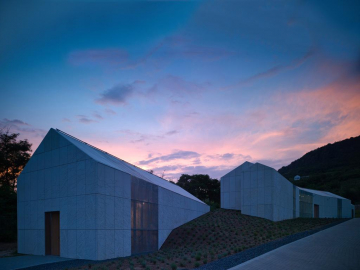
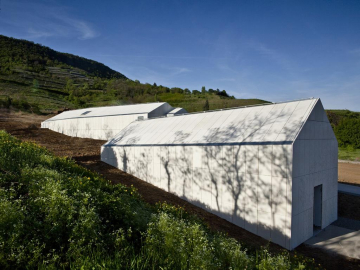
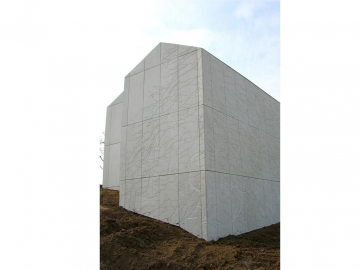
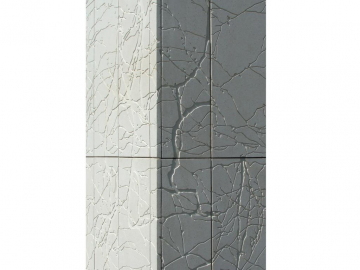
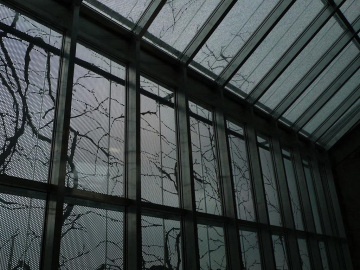
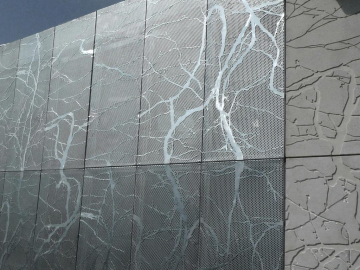
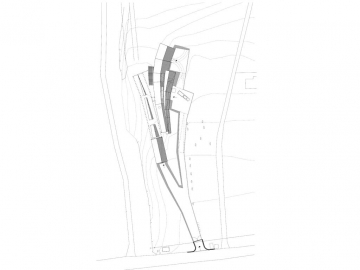
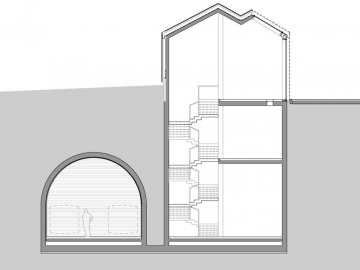
 copy.jpg)
 copy.jpg)